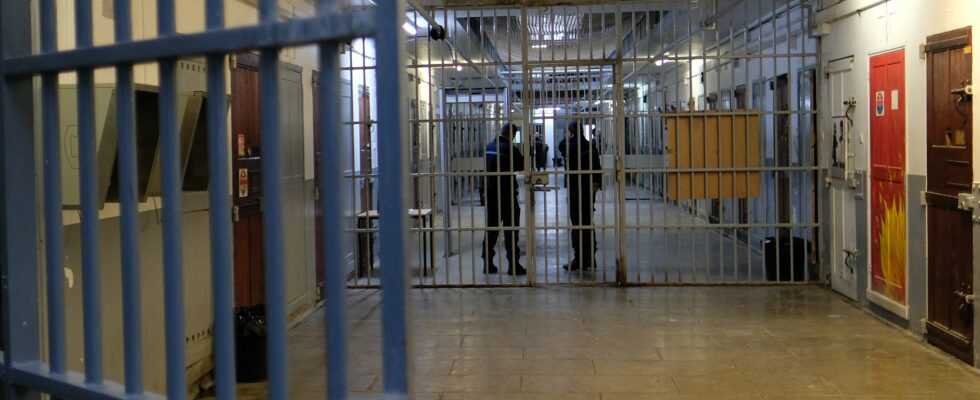This threshold had not been reached in French prisons since the start of the health crisis two years ago, according to official figures published on Thursday March 31.
The 188 prison establishments had 70,246 prisoners on March 1st for 60,619 operational places, i.e. an overall prison density of 115.9% against 105.9% a year ago.
The number of people incarcerated had already come close to this symbolic bar on February 1, with 69,964 detainees.
Over one year, there are 5,841 more detainees, representing a growth of 9.1% of the prison population.
Density above 150% in 46 prisons
According to statistical data from the Ministry of Justice, 13,545 detainees are currently in excess of the places available in penitentiary establishments.
Prison density stands at 137.7% in remand centers, where prisoners awaiting trial – and therefore presumed innocent – and those sentenced to short sentences are imprisoned.
Forty-six French prisons have a density greater than 150%. This density even exceeds 200% in six establishments (214.9% in Bordeaux-Gradignan, 212.8% in Fontenay-le-Comte and Perpignan).
Because of this overcrowding, 1,665 prisoners in France are forced to sleep on mattresses placed on the floor. They were 848 on March 1, 2021.
The number of women imprisoned on the rise
Among the detainees, 19,434 are defendants, imprisoned awaiting trial.
In total, 85,053 people were placed in prison on March 1, including 14,807 non-detainees subject to placement under electronic bracelet (14,080) or placement outside (727).
The number of female prisoners (3.6% of the total prison population) is slightly up, while that of minors (0.8%) is stable.
The very symbolic bar of 70,000 detainees in France was crossed for the first time in April 2018, before exceeding the threshold of 71,000 in November 2018, then 72,000 in March 2020, at the very start of the pandemic.
The health crisis had led to a drastic drop in the prison population, the number of prisoners even falling below the 60,000 mark in May 2020, thanks to a drop in delinquency during confinement and therefore less incarceration, as well as early release measures for some 6,600 people at the end of their sentence.

![La procédure concerne 120 établissement à travers les Etats-Unis.[Ludovic MARIN / AFP]](https://static.cnews.fr/sites/default/files/styles/image_375_210/public/000_9mw9f7-taille1200_61f949efd1710_0.jpg?itok=1-ujl_30)